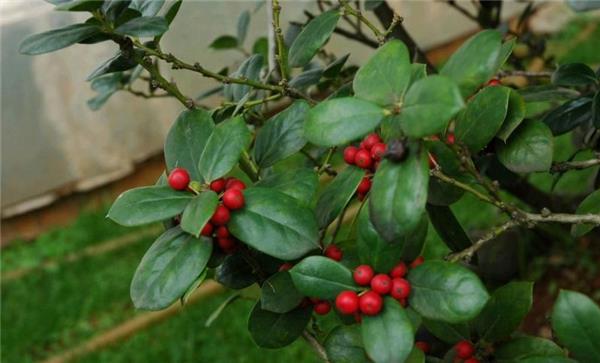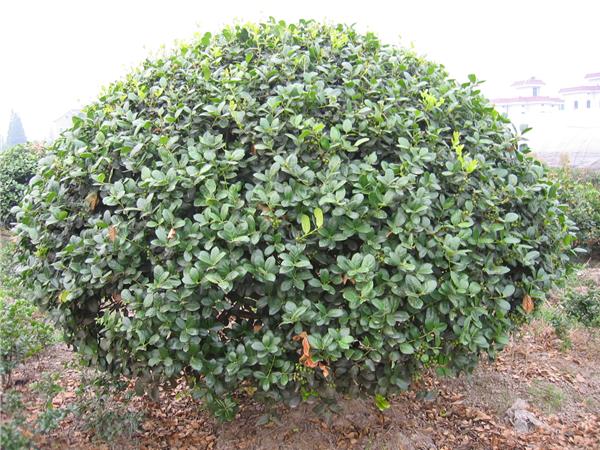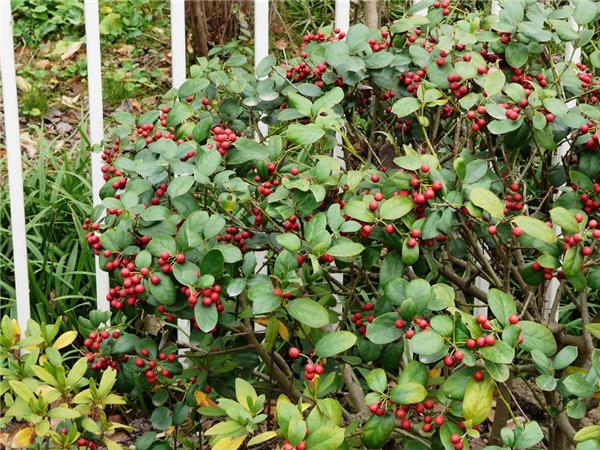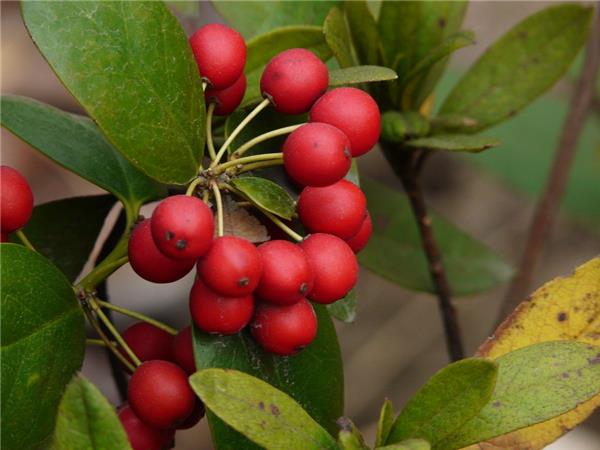Culture methods and matters needing attention of potted thornless medlar bone
Fructus Lycii is a typical tree species with both leaf effect and fruit effect, so its ornamental value is beyond doubt.

An introduction to the Chinese wolfberry without thorns
Morphological features: it is a natural variety of holly, evergreen shrubs or small trees, with luxuriant branches and leaves, strange leaf shape, thick green and glossy. The crown is round, yellow-green flowers bloom from April to May, drupe globular, green at the beginning, mature in autumn and turn red, full of fruitful fruit, bright and dazzling, not withered by winter to next spring, after pruning and shaping can be made into a large tree, spherical and tree-shaped bonsai, is a good ornamental tree species with ornamental fruits and leaves.
Growth habits: like light, warm, moist and well drained acidic and slightly alkaline soil, strong resistance, resistance to pruning. It grows well at the temperature of minus 8-10 ℃. Strong adaptability, the most suitable for the Yangtze River basin growth, resistant to pruning.
Garden use: evergreen all the year round, bright leaves, landscaping can be trimmed into spherical shrubs or small trees.

Culture and nursing of potted Chinese wolfberry bone without thorn
Basin soil: it is suitable to choose glazed pottery basin or purple sand pottery basin with a diameter of 30 to 40 square meters. Chinese wolfbone prefers fertile and well-drained slightly acidic or neutral soil, which is planted in alkaline soil and grows poorly. Avoid waterlogging, more resistant to drought, basin soil requires loose, good air permeability, good water retention, high content of organic matter, fertilizer conservation. It can be prepared with the ratio of garden soil: peat: sand = 4:3:3. An appropriate amount of organic fertilizer and ferrous sulfate can be added to the nutritious soil.
Watering: it is appropriate to keep the basin soil with a certain humidity in peacetime, and it is suitable to water every 1-2 days in spring. during the period of vigorous growth in summer, you need to water frequently, you can water once a day, and spray water to the leaf surface and around it every day, so as to reduce evaporation and play a cooling role. The thorn-free medlar bone is afraid of stagnant water and is resistant to drought. in order to avoid rotting roots due to stagnant water, it is generally necessary to keep the basin soil moist without stagnant water; to reduce the amount of water in autumn, it can be watered every 1-2 days; if you overwinter in the greenhouse in winter, you can water it every 7 days.
Fertilization: generally apply thin cake fertilizer and water every two weeks in spring, topdressing once a month in autumn, not fertilizing in summer and once in winter.

Turning the basin: the bonsai without thorns is usually turned once every 2 to 3 years, often in the spring from February to March, or when the trees enter the sleeping period after autumn. When turning the basin, you can trim off part of the old roots, apply sufficient base fertilizer, retain the old soil of 1x2, and put it back on the basin.
Pruning: the thornless medlar bone has a strong germinating power and is very resistant to pruning. For scenic works, unnecessary overgrown branches, germinating branches and superfluous buds can be cut off to maintain a certain tree shape. For the wood that needs to be processed, some branches can be retained according to the need to facilitate processing and modeling.
Pest control: sometimes the branch is caused by coal pollution caused by wood lice. Occasionally, when the scale insect is harmful, it can be sprayed with lead arsenate.

Raising a pot of thornless wolfbone at home can not only beautify the room, but also effectively purify the air inside the room. It is a tree species that can help us protect our health.
Related
- Wuhan Hospital Iron Tree Blooming Result Was Instantly Frightened by the Gardener Master
- Which variety of camellia is the most fragrant and best? Which one do you like best?
- What is the small blue coat, the breeding methods and matters needing attention of the succulent plant
- Dormancy time and maintenance management of succulent plants during dormancy
- Minas succulent how to raise, Minas succulent plant pictures
- What are the varieties of winter succulent plants
- How to raise succulent plants in twelve rolls? let's take a look at some experience of breeding twelve rolls.
- Attention should be paid to water control for succulent plants during dormant period (winter and summer)
- Watering experience of twelve rolls of succulent plants
- Techniques for fertilizing succulent plants. An article will let you know how to fertilize succulent plants.



